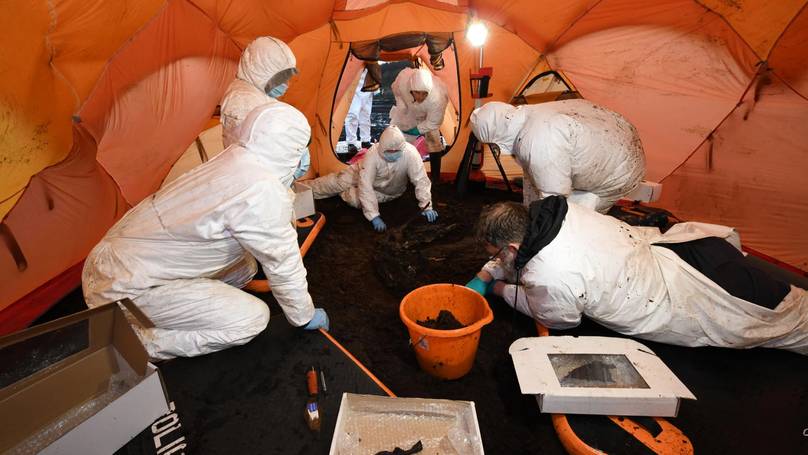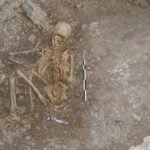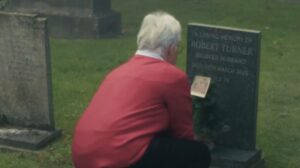“Unearthed Secrets: The Mystery of the Headless Roman Woman Who Defied Time”
Imagine stumbling across a 2,000-year-old mystery in the heart of Northern Ireland’s boglands—a remarkably preserved body of a woman, yet, strangely, she’s missing her head. It’s enough to send shivers down your spine, right? As archaeologists delve deep into this chilling tale, they’re piecing together clues that suggest her gruesome fate might be linked to ritual sacrifice, a grim practice that was not uncommon in ancient times. Couple that with the police initially treating this as a modern crime scene—now that’s a plot twist worthy of a historical thriller! So, pull up a chair, because we’re about to explore the shocking details behind the discovery of the Ballymacombs More Woman and examine what this ancient enigma reveals about our past. LEARN MORE
Archaeologists examining the 2,000-year-old remains of a woman without a head think they’ve discovered the gruesome reason the key body part is missing.
Found incredibly well preserved in bogland in Northern Ireland, the site quickly became a potential crime scene with officers from the Police Service of Northern Ireland (PSNI) cordoning off the scene.
But police quickly stood down after realising this was not a modern death in the slightest. In fact, it was one that dating back to before the birth of Jesus Christ himself and the case was handed over to archaeologists working within the PSNI.
One major question remained: how did the body of this person come to be found without a head? And why was the head removed?
Known as the ‘Ballymacombs More Woman’ in the time since the initial discovery in late 2023, initial enquiries thought the remains belonged to a young man before DNA sequencing changed the sex altogether.
Forensics put the body as being from 343 BC to 1 BC, making her at least 2,026 years old. And despite it being from thousands of years ago, partial fragments of skin and fingernails were still on the body due to how the peat had preserved it.
Now, working with other archaeologists, historians, and forensic specialists at National Museums Northern Ireland, they have estimated the woman was between 17 and 22 years old when she died.
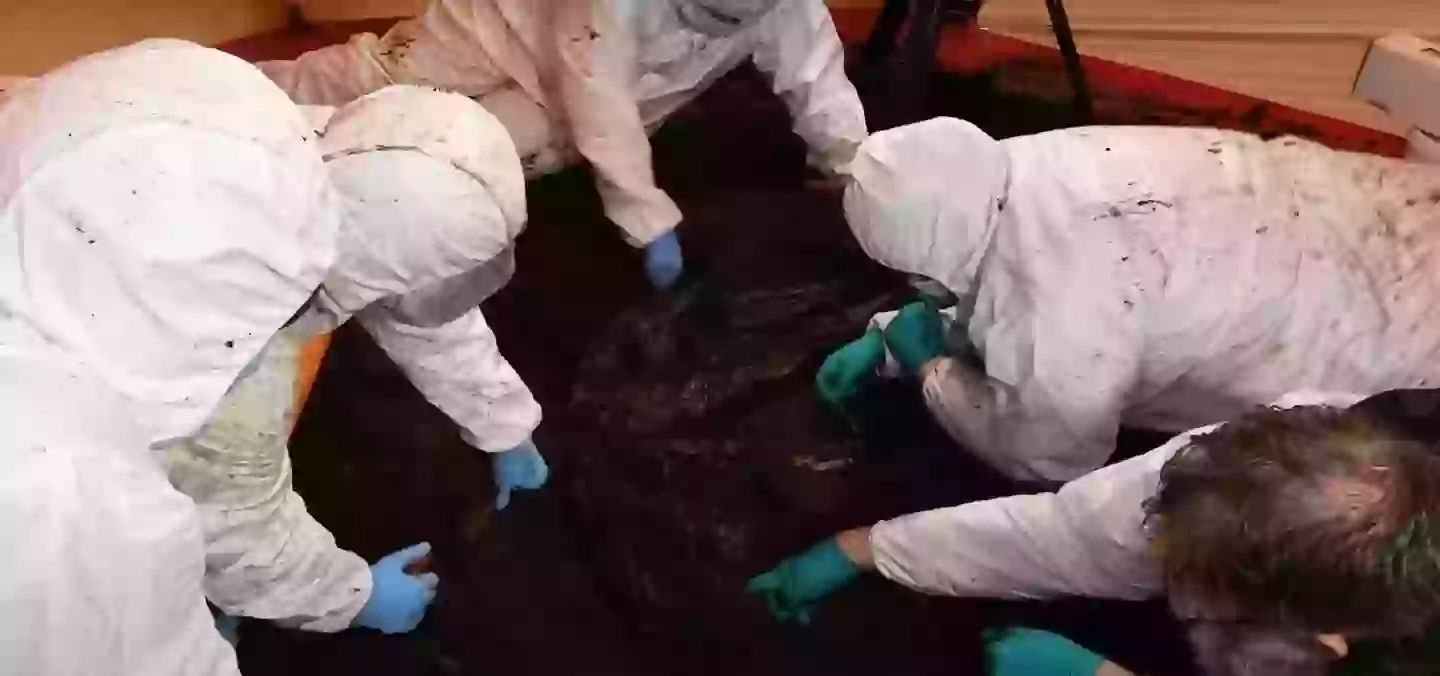
Examining the body after being found (YouTube / PSNI)
Standing at around five feet and six inches tall, she was a pretty tall woman for this period of history.
But what about the head? Gruesomely, there are clear cut marks around the neck bones of her skeleton. That means her head was deliberately taken off her body.
And due to the time period she was alive, it can be estimated that her death may have been part of a ritual sacrifice – a trend found with other bodies found in bogs across the British Isles.
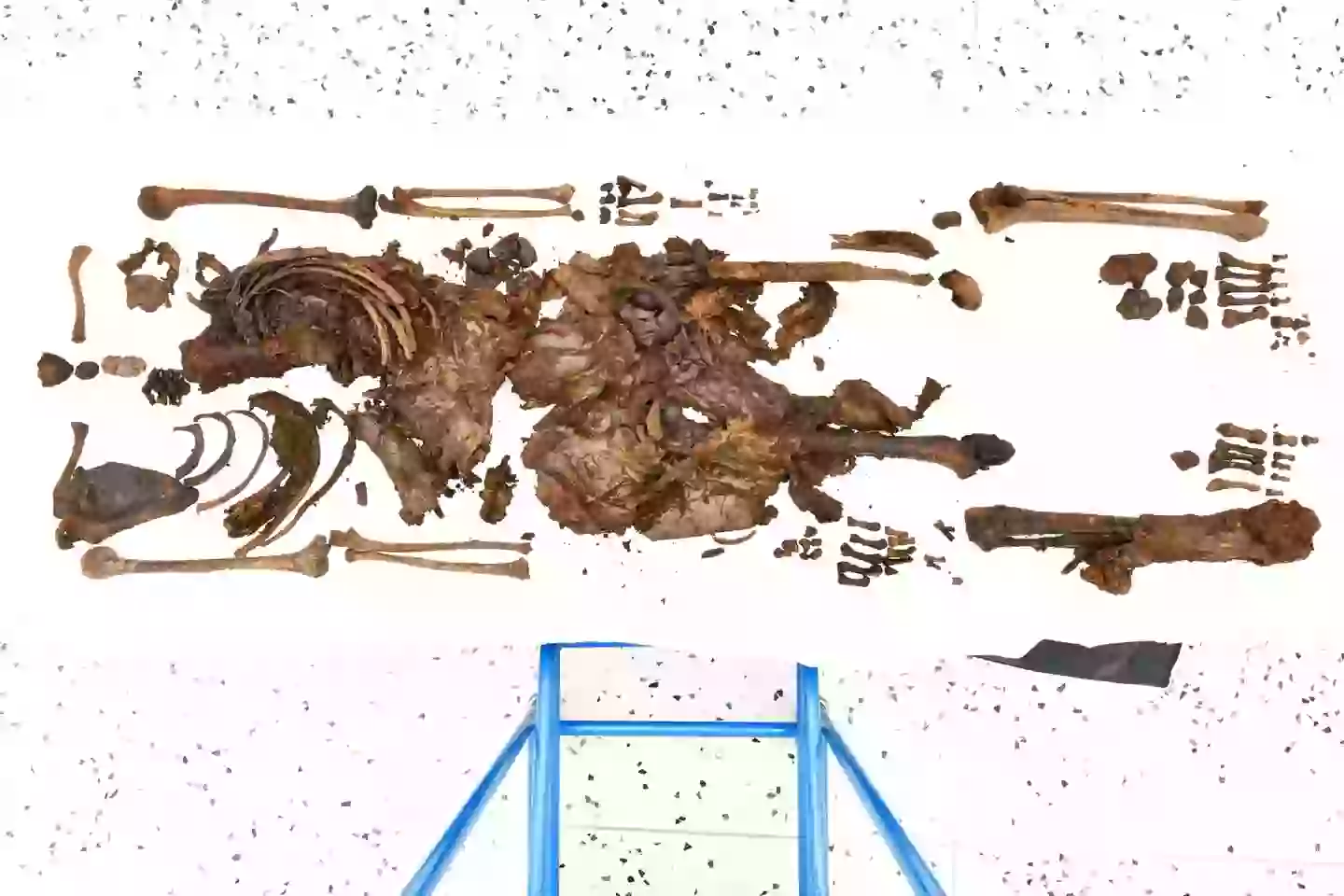
The remains after being recovered (PSNI)
According to Archaeology News, bodies found in bogs usually a sign of violent deaths, including stabbing, bludgeoning, hanging, or strangulation.
Eileen Murphy, Professor of Archaeology at Queen’s University Belfast, had been the person in charge of the osteological assessment.
Professor Murphy said: “As is the case for so many Iron Age bog bodies, the young woman suffered a highly violent death that involved the flow of blood from her throat, followed by decapitation.
“The head was taken away, but the body was left where it fell, only to be discovered by machine workers some 2,000 years later.
“Further scientific analysis, including the conclusion of DNA analysis, will no doubt yield more fascinating findings.”
Detective Inspector Nikki Deehan previously said: “This is the first time radiocarbon dating has been used on a bog body in Northern Ireland, and the only one to still exist, making this a truly unique archaeological discovery for Northern Ireland.”
Work is now taking place to fully preserve her remains at National Museums Northern Ireland.

